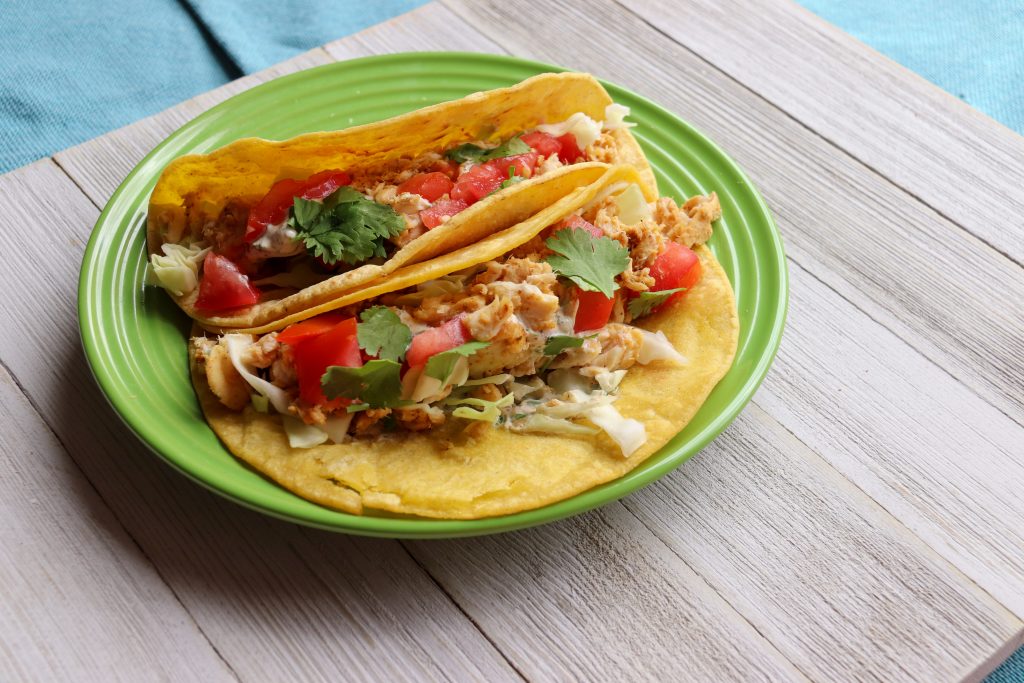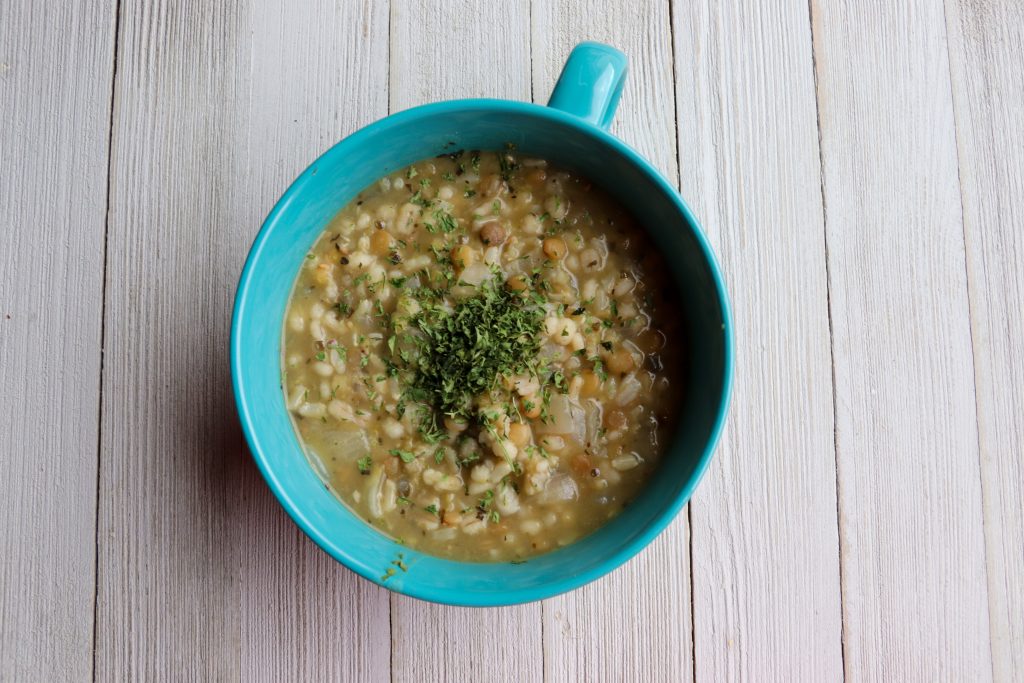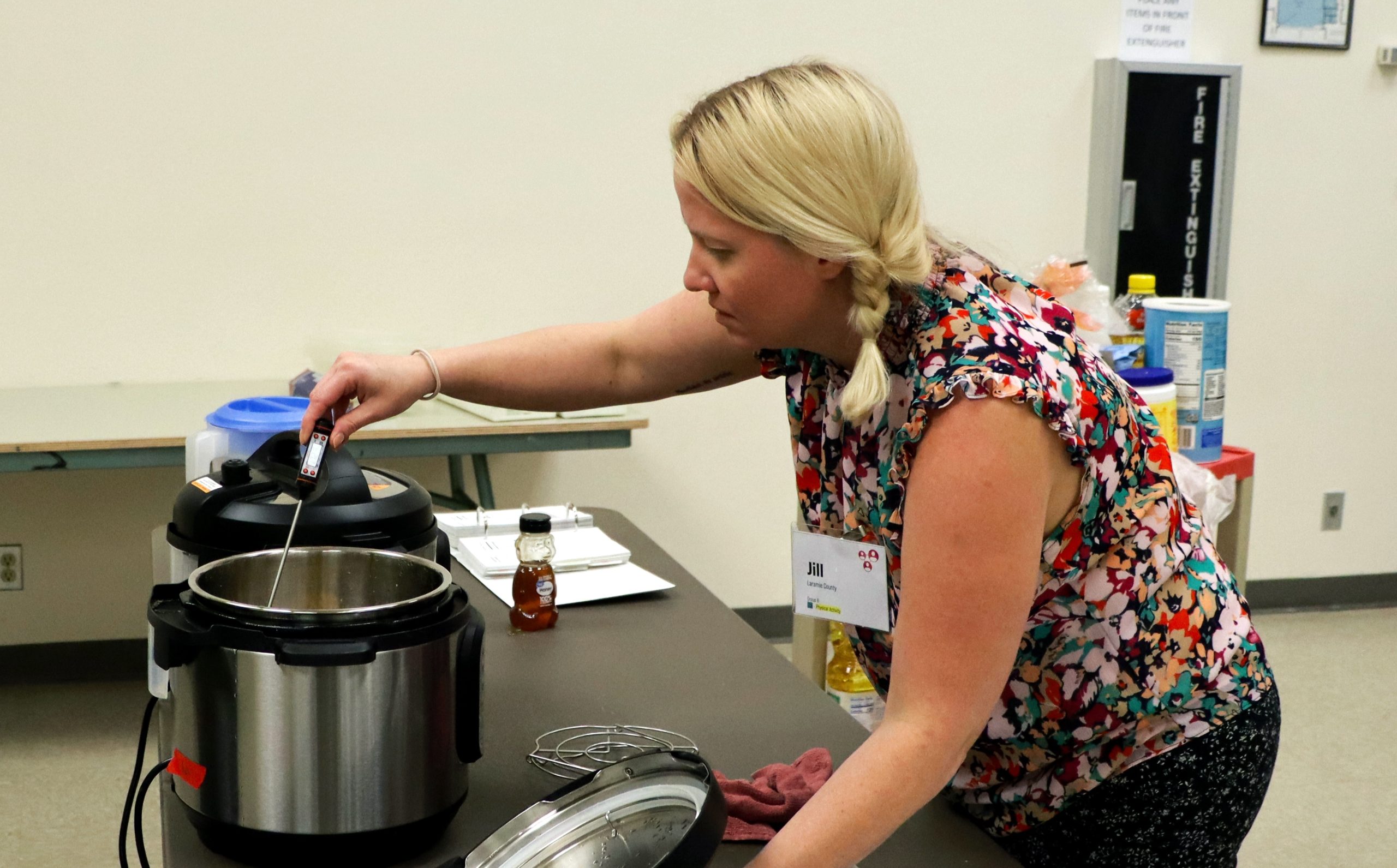
As an inexpensive, healthy, and shelf-stable source of protein, dry beans are a staple in food pantries. At a glance, they’re a great way to improve nutrition and food security. But dry beans have a downside: they take a long time to cook, especially at high altitudes.
“It’s one of the least expensive protein-rich foods for pantries to buy and have on their shelves, but it’s also often skipped over and left on shelves,” explains Kali McCrackin Goodenough, manager of the University of Wyoming Extension’s Cent$ible Nutrition Program (CNP).
In 2022, food pantries reached out to CNP with exactly this problem.
Enter the electric pressure cooker
Wyoming’s Cent$ible Nutrition Program offers in-person and online resources focused on nutrition, physical activity, and how to eat healthier on a budget. Funded by the USDA’s Supplemental Assistance Program – Education (SNAP-Ed) and the Expanded Food and Nutrition Education Program (EFNEP), the program provides free in-person and online cooking and nutrition classes for those who income qualify.
CNP works with more than 300 partners across the state, including food pantries and other anti-hunger organizations, to serve people facing food insecurity. Many food pantry partners had repeatedly voiced concerns about dry beans going unused by their patrons.
“We asked what would change that and they said a way to cook the beans faster and more efficiently,” says McCrackin Goodenough.
Participants in CNP classes had also expressed apprehension about cooking with dry beans. “Having conversations with participants, they mentioned they didn’t know how to make beans or it takes a really long time,” recalls Cristina Terry, a CNP educator based in Natrona County.
In 2022, CNP launched a new statewide program, “Under Pressure,” in response to the needs articulated by their partners and participants. Through this project, once participants complete CNP’s standard eight-lesson curriculum, they are eligible to take an additional lesson on how to cook with an electric pressure cooker.
CNP staff also secured external grants to fund the purchase of electric pressure cookers for participants who successfully complete the “Under Pressure” lesson.
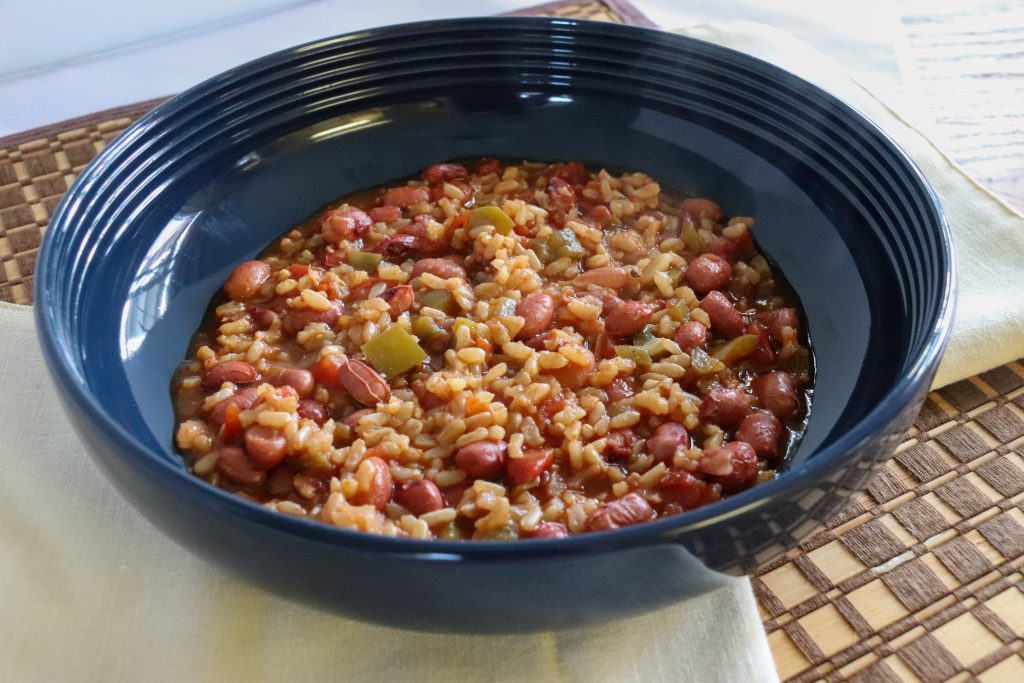
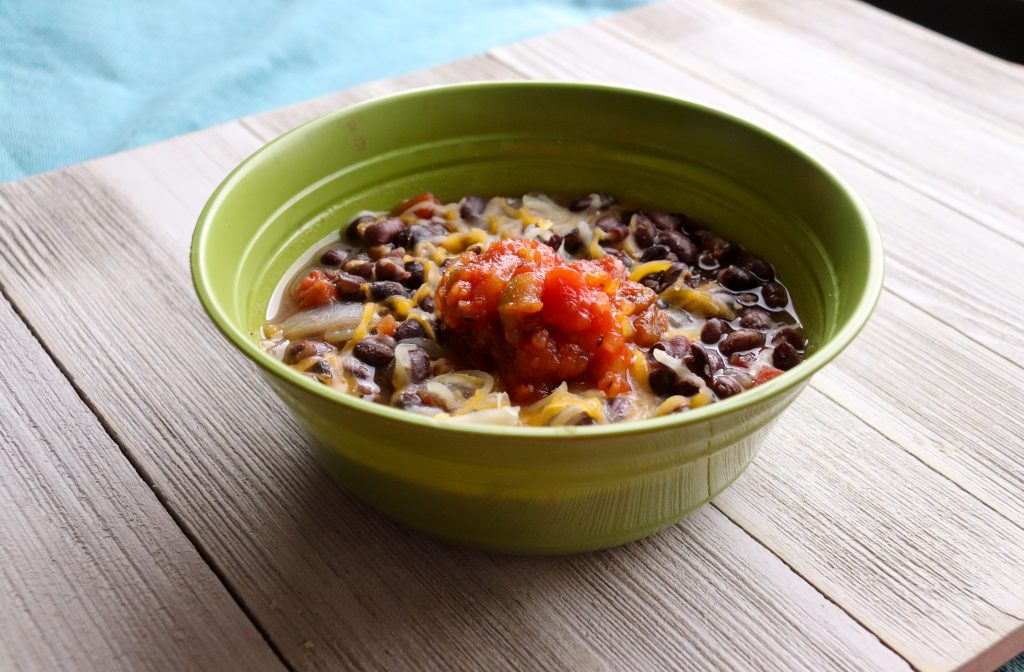
How electric pressure cookers can help
Electric pressure cookers can help improve both nutrition and food security. “I absolutely love it! I’m eating more vegetables and beans too,” comments a CNP participant from Natrona County. “It is just so easy.”
For food pantry patrons, these devices “provide both a way to cook and a way to use the food sources they have more efficiently,” McCrackin Goodenough explains.
Electric pressure cookers can be especially useful for those who may not have access to stable housing or are living in transitional housing. The devices are portable and require only electricity, not access to a stove or other appliances that may not be available in all housing situations.
Even if someone has access to a stove, it may not be a safe or economical option, Terry points out. “It takes a lot of courage to go to a food pantry, and if someone is struggling for food, they may be struggling with something else,” says Terry. “Just because we’re privileged in being able to turn on the stove and not think twice, some individuals may not be.”
For older people or those with a physical disability, electric cookers have an additional benefit: they significantly reduce the need to stand for long periods of time while prepping and cooking meals.
Launching the course
Once electric pressure cookers were identified as a potential way to encourage dry bean consumption, the CNP team began developing a lesson and recipe booklet for the class.
CNP’s typical adult curriculum includes a series of eight hands-on lessons, each about an hour and a half, designed to build knowledge around cooking, food safety, and nutrition. The new electric pressure cooker class added a ninth lesson to the mix, an optional addition for CNP participants who have created the initial eight lessons.
Staff from across the state pitched in to help test and compile recipes for the “Under Pressure” project. They also created a series of videos and other online resources that participants could revisit after they completed an in-person class.
“Educating our participants on all aspects of pressure cooking became a big project for educators around the state,” recalls Wendy Nielson, an educator in Sweetwater County. “To help our participants choose and use these wonderful, nutritious beans…we needed to create a new lesson with the objective of safe cooking and motivation to use the appliance regularly.”
The electric pressure cookers were purchased through external grants provided by Wyoming Hunger Initiative, Farm Credit Services of America, and other sources. In Natrona County alone, CNP secured funding to procure 100 Instant Pot pressure cookers for participants who successfully completed their nine lessons.
In 2023, CNP also received a grant from the John P. Ellbogen Foundation in support of the program.
A success story
While land-grant universities in other states have provided resources for using electric pressure cookers, CNP’s approach is unique. “Our program takes the perspective of food security versus just ‘how do you cook in an electric pressure cooker,’” McCrackin Goodenough explains.
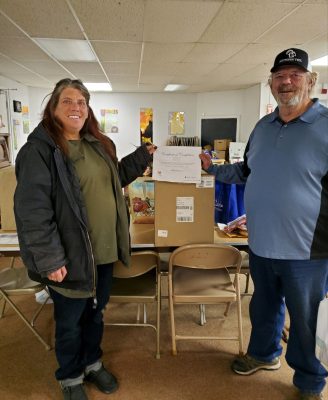
In 2023, more than 170 people participated in CNP’s “Under Pressure” class. Before completing the class, less than 3 percent of participants reported using an electric pressure cooker to cook dry beans, peas, or lentils; 3 months (or more) after the program, the number had jumped to nearly 85 percent.
Through exit surveys and conversations with participants, CNP educators have received resoundingly positive feedback on the new program.
“I absolutely love it. It is so easy to just put everything in one pot,” comments a CNP graduate in Natrona County. “I’m eating better and feeling better. I’m eating more vegetables, too…Every time I cook in it, I invite all my friends over!”
Another participant, who serves as the primary cook for his multi-generational family, says the electric pressure cooker has saved a lot of time. “His family couldn’t believe how fast the beans cooked,” comments Billie Spoonhunter, a CNP educator on the Wind River Indian Reservation.
The electric pressure cookers have even inspired some participants who were previously reluctant to cook at all, reports Mary Evans, a CNP educator serving Converse and Platte Counties. “Almost daily, she [a CNP graduate] is posting something she cooked in the electric pressure cooker and shared with her coworkers. This is a young lady who hated to cook and now loves it and tells people how much she learned in the class.”
Another couple “indicated that they use the electric pressure cooker frequently and that it has been a lifesaver,” says Evans. “[One participant] was not a cook before this class and has taken up cooking with the use of the electric pressure cooker.”
Sharing resources with a wider audience
While the new class was originally designed as a resource for Wyomingites facing food insecurity, the CNP team quickly realized that the course materials would benefit any high-altitude cooks looking to prepare healthy, budget-free meals.
UW Extension now offers a free online version of CNP’s “Under Pressure” class. While members of the general public are not eligible to receive a free electric pressure cooker upon completion of the course, they are encouraged to check out the recipes, food safety tips, and videos on how to use and clean the device.
“Using an electric pressure cooker can be a little intimidating at first,” says Nielson. “The information that is taught in the class is a great resource for folks wanting to learn how to safely use it.”
The self-paced course, which is approximately an hour long, familiarizes users with the components and settings of an electric pressure cooker as well as how to adjust recipes for higher altitude locations. “It’s tailored to people who haven’t used an electric pressure cooker before, but also to the realities of living and cooking in Wyoming,” McCrackin Goodenough explains.
To access the online course, visit https://bit.ly/uw-electric-pressure-cooker. To learn more about CNP, visit uwyocnp.org.
